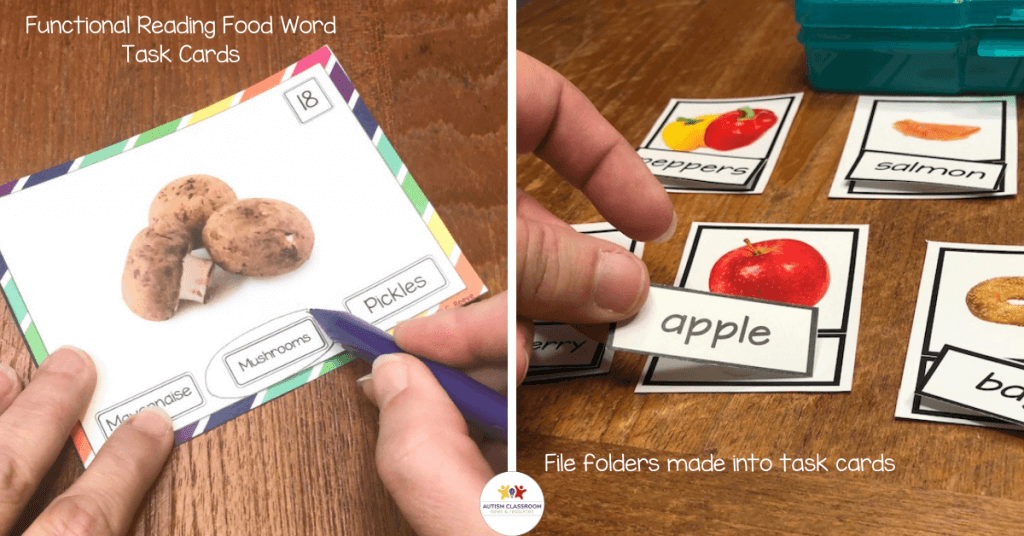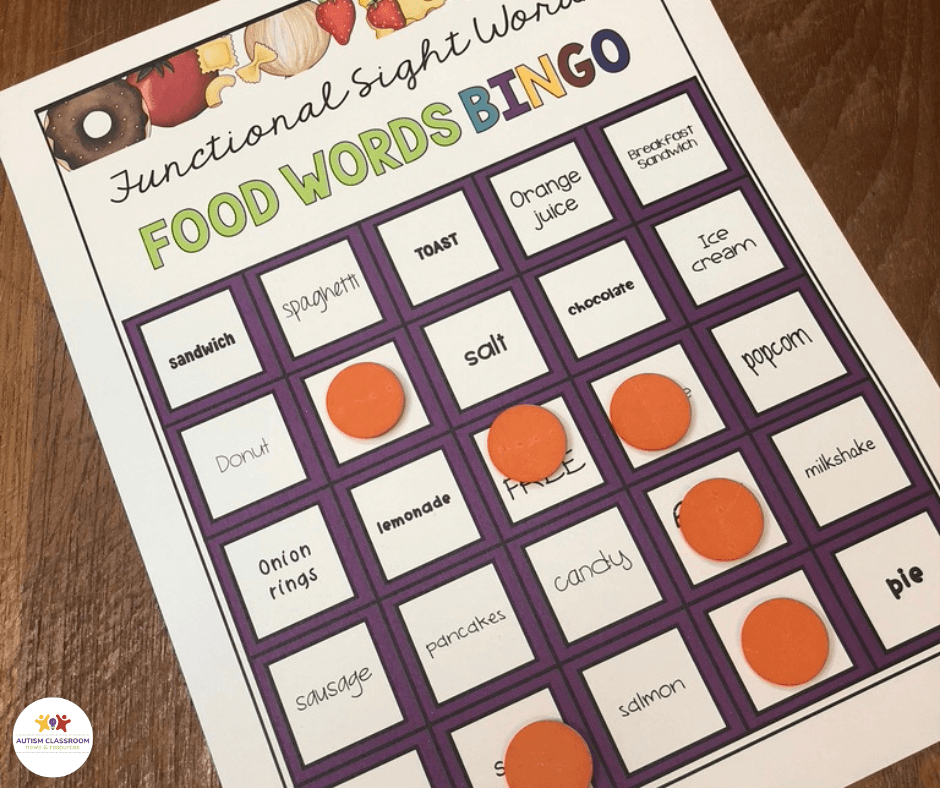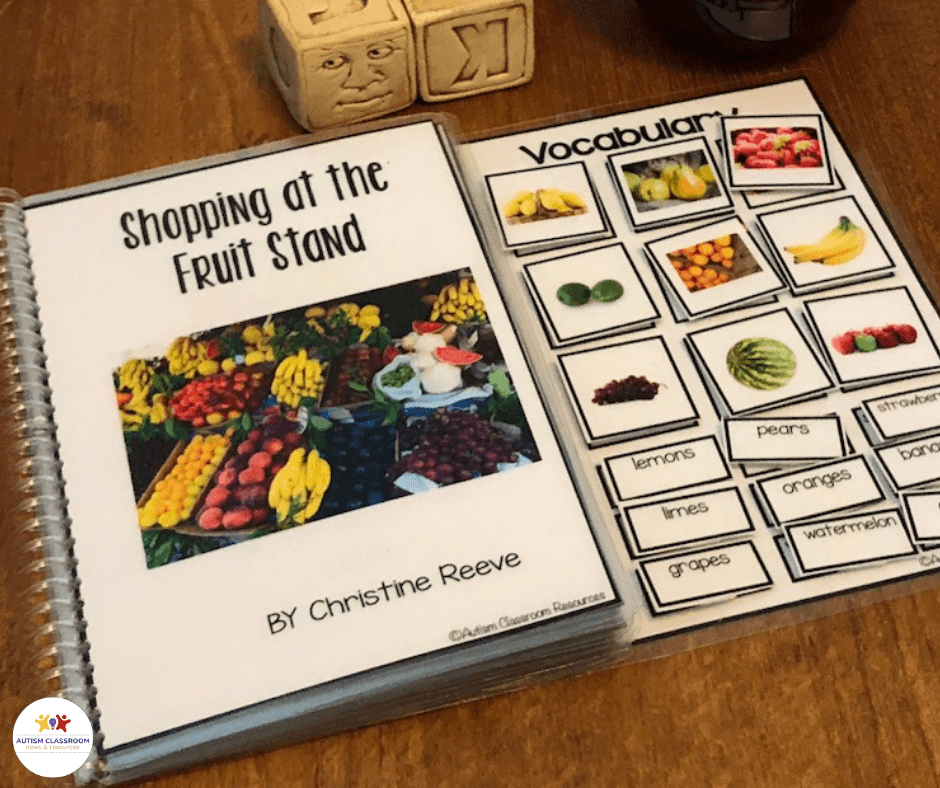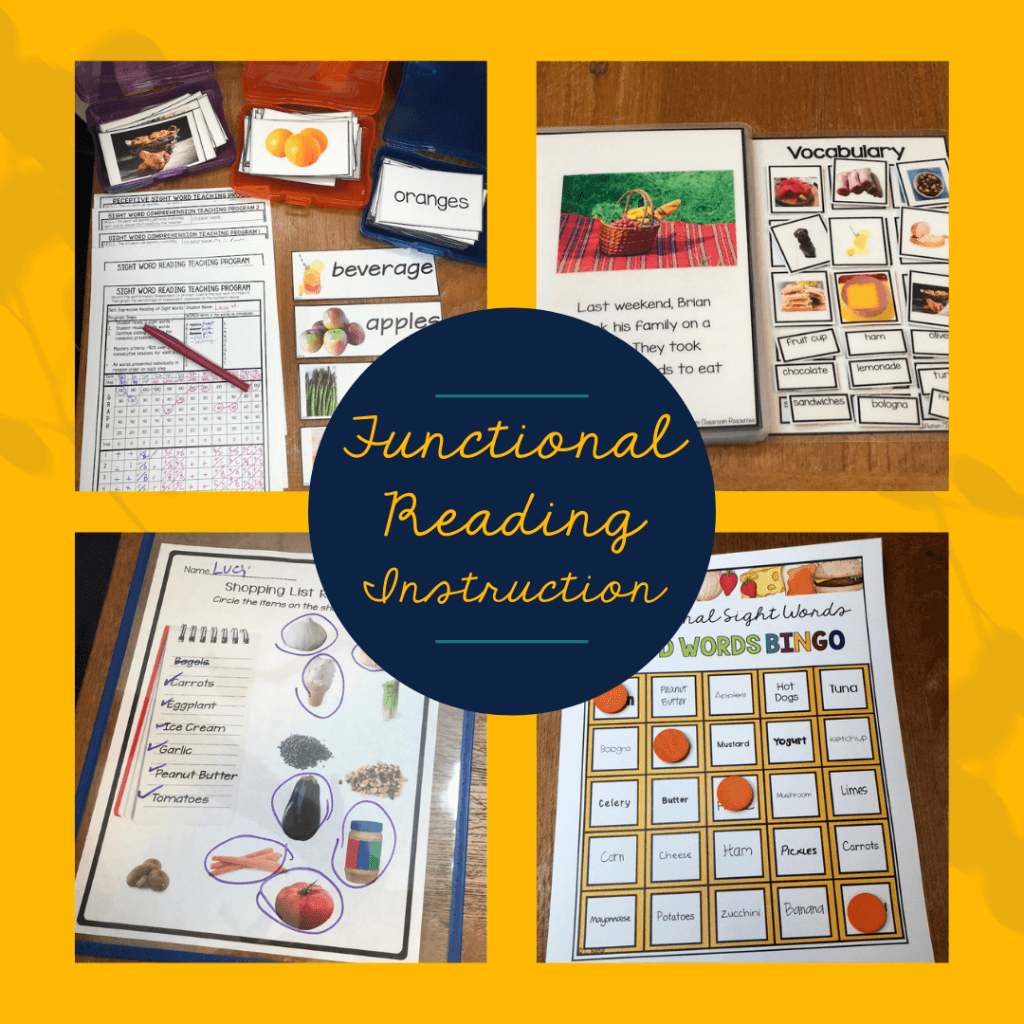Sharing is caring!

Functional reading is critical for our students, especially as our students get older. But, many of our students may struggle with phonics for years. Teachers find that they do better with sight words. And many students, particularly those with autism, do learn sight words well. They are visual and they learn them in chunks. However, it’s easy to get focused on just recognizing the sight words and missing everything else that makes up reading in our instruction.
Consequently sometimes our students are great at recognizing the sight words. But they can’t use them well; they don’t truly understand or comprehend them. And they don’t practice reading them within connected text.

What Our Students Need for Functional Reading
Obviously learning the words is a key component in functional reading. But there is a lot more to really reading and being literate. And even learning the words can be a struggle for some students without consistent systematic instruction. Even more frustrating, often teachers are left on their own to put together the components needed to teach it all in a functional way.
Wouldn’t it be nice to have everything you need to teach sight words from explicit direct instruction to connected text? Let’s look at what that looks like.
Discrete Trials / Explicit Instruction
Explicit instruction is the foundation of good academic instruction in special education. And discrete trials is one form of explicit instruction that works well for many students with significant disabilities. It isolates the teaching targets from other distractors to help the students focus clearly to initially learn the skills. And then works on teaching the student to discriminate the words from others.
![discrete trials serve as good explicit instruction for functional reading [picture of discrete trial data sheet on clipboard at desk with word and picture cards for food words. second picture of what's included in the direct instruction kit for teaching food words, including 100 word wall cards, flash cards, data sheets and generalization pictures.]](https://autismclassroomresources.com/wp-content/uploads/2021/02/discrete-trials-serve-as-good-explicit-instruction-for-functional-reading-1024x536.png)
Discrete trials can be used for teaching identifying the words themselves. Students also need explicit instruction in reading comprehension. And often this is an element that is hard to find in curricula. Individuals with autism, in particular, are often able to name the words without understanding them. So specifically teaching comprehension is key for their instruction.
Fluency Practice
Students also need to practice their words with fluency to build to maintenance and generalization. Building fluency allows them to access their knowledge of the words readily. In order to focus on the content of what they are reading, students need to be able to be able to read fluently without getting tripped up by thinking about what the words are or what they mean.

One step in fluency practice is fluency drills. Fluency drills are simply setting a time limit and seeing how many words the students can read. The hard part for students with disabilities and sight words is that there aren’t really any guidelines about what their benchmarks should be. So often the best solution is to take a baseline and then work toward improving the student’s performance to a level that allows them to progress through reading sufficiently.
Functional Reading Generalization Activities

Once students have started to master their identification and comprehension of the sight words, they need lots of opportunities to practice those skills in various situations. Finding ways to make their practice relate to real world situations is helpful. I like using real-world pictures and developing or using materials that represent real-life uses. So for instance, for food words, finding the words in menus and grocery stores.
These practice activities then can be used in stations with paras. And then later they can be worked into independent work. This way students practice throughout the day.


File Folders & Task Cards
File folder activities and task cards are great ways for students to practice reading comprehension. With file folders, students can match words to words. But they can also match words to pictures, to practice reading comprehension and generalize their knowledge.

Task cards are another great way for students to practice reading comprehension and generalize their skills. Students can either match the words or identify them with multiple choices.

BINGO Practice for Functional Reading
BINGO games are another good way to practice sight words. Students practice social skills during game time but work on finding sight words on their cards. Using BINGO they also have to listen to the words and find them in print, rather than seeing them as they would on worksheets.


Dedicated Functional Reading Comprehension with Connected Text
Finally, it’s not enough to just be able to find and match words. Even with functional reading words and text, students need to see and read the words in connected text. Finding texts at their reading levels can be difficult. Similarly, finding words that highlight something like food words can be hard. Interactive books can help.


These interactive books, for example, focus on the 100 food words. Students match the pictures and complete sentences with the pictures. These books allow students to practice reading with the designated vocabulary words and pictures and topics appropriate to their age range.
Next Steps in Functional Reading
Obviously there are more skills that you can add to functional reading like moving into writing for full literacy. One critical step is community-based instruction. Since we are teaching students words they are expected to use in natural contexts, they need to practice using them in natural contexts. So using actual ads from your grocery stores, menus from your restaurants will be important to build generalization skills. Bu using a variety of methods for practice in the classroom will help to make those community-based experiences more successful. For instance, interactive books about going to a restaurant helps with the vocabulary but also serve as ways to introduce the outing.
Looking for the Tools to Help You Teach Functional Reading?
So if you are looking to incorporate the different elements highlighted in this approach, I’ve bundled them all together in the product below. The Food Word Curriculum Bundle is designed to help you teach and generalize 100 food sight words from recognition to reading comprehension. It includes.
- The Instruction Kit, including a video walkthrough of the discrete trial programs and data collection forms, word wall, fluency strips, picture and word flash cards, and generalization cards as well as IEP goals to go with it all.
- Interactive Books
- File Folder Activities
- Multiple-Choice Task Cards
- BINGO Games with 2 levels of difficulty
- Worksheets-4 types with 2 difficulty levels







